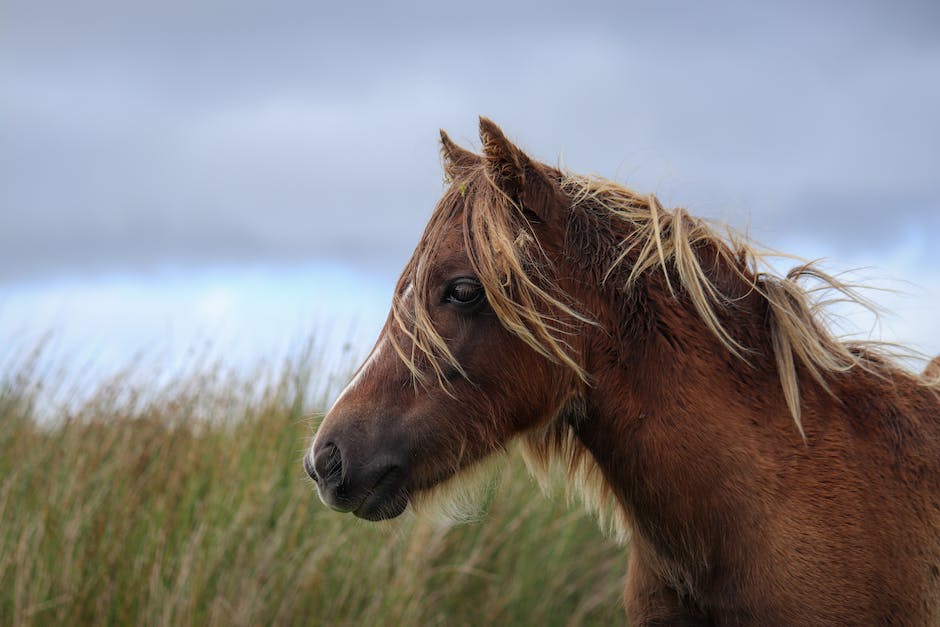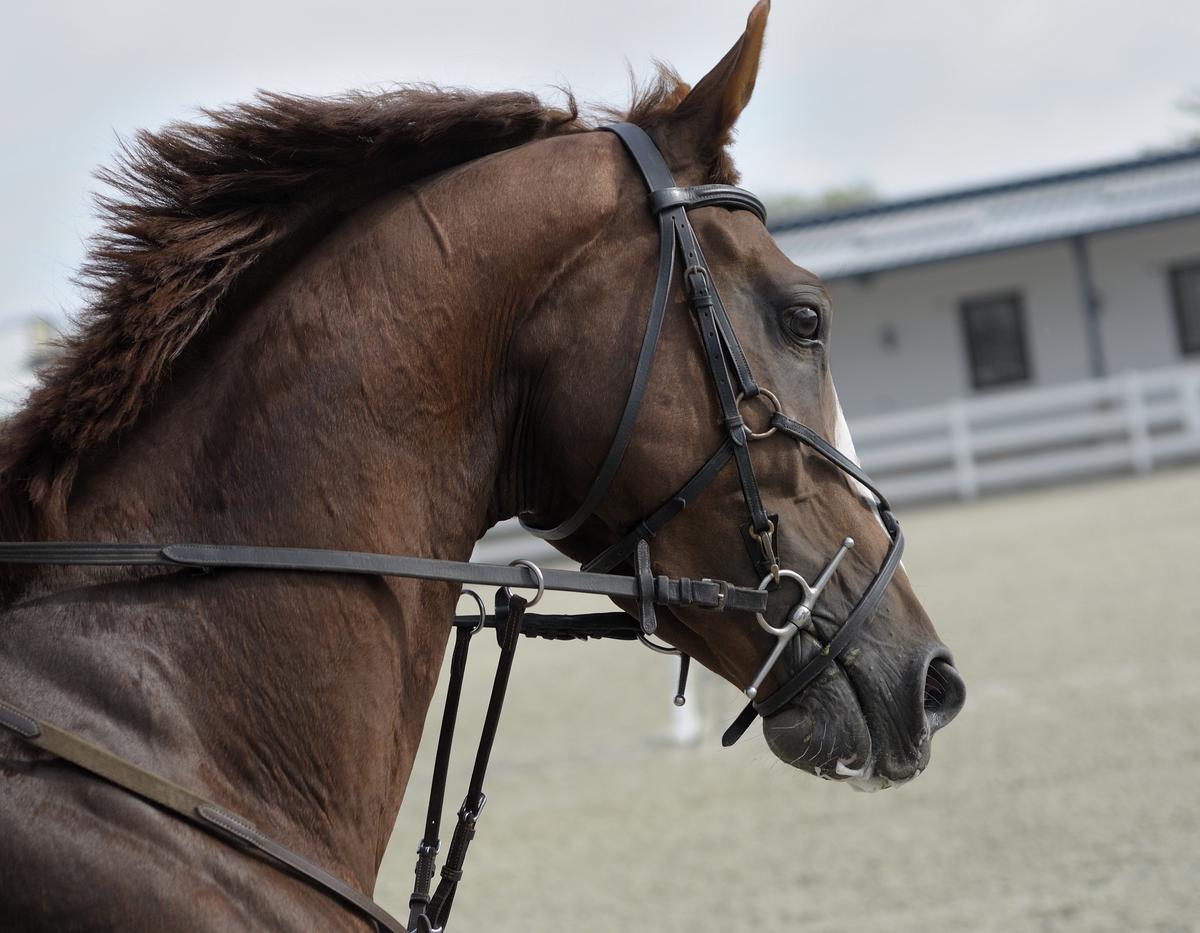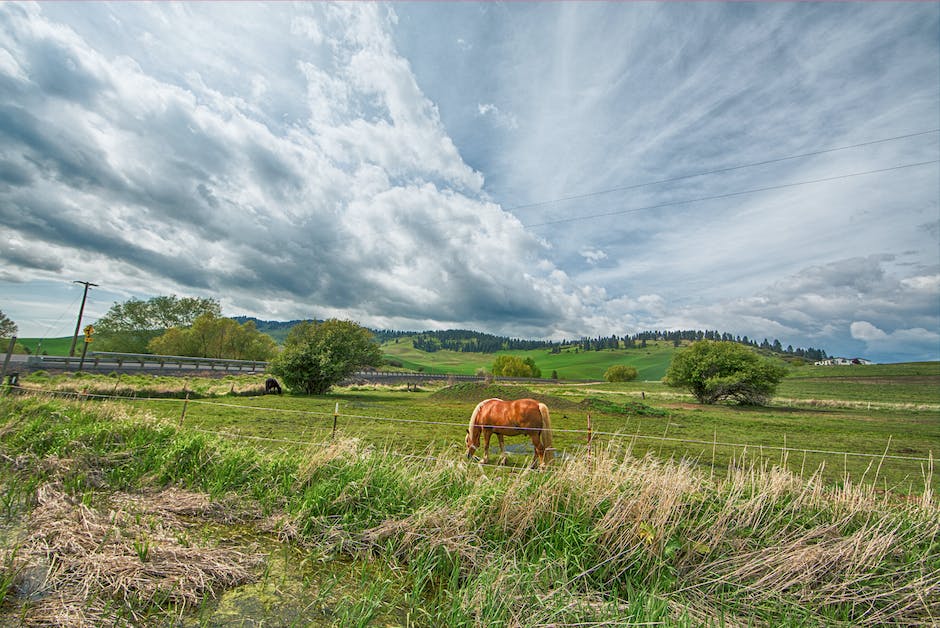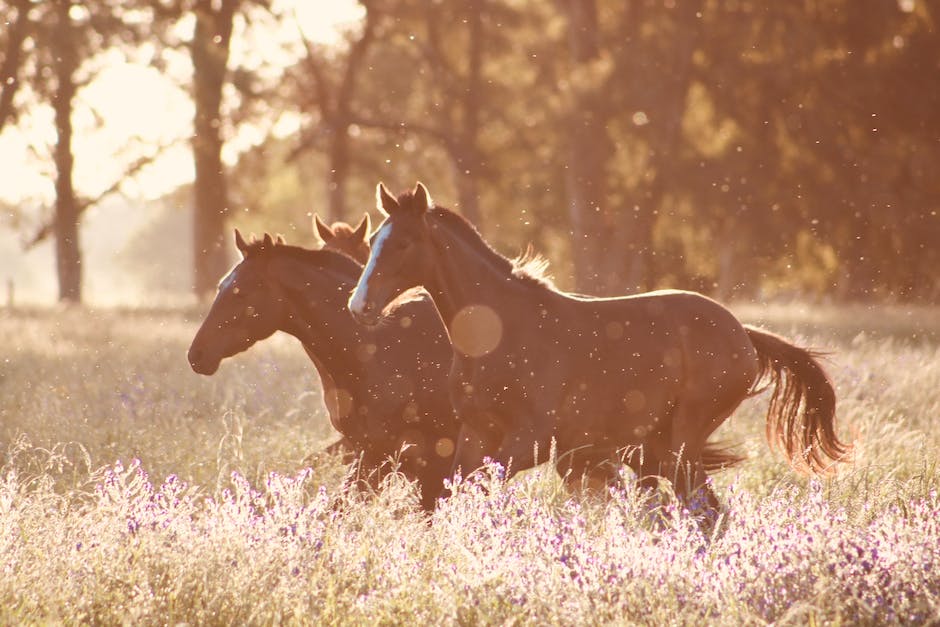The Russian Warmblood, an impressive horse breed steeped in a rich history, has increasingly piqued the interest of equestrian enthusiasts across the globe. With a lineage traced back from their native Russia, these horses are renowned for their athletic abilities, making them an ideal choice for a variety of equestrian sports. This exploration offers an in-depth review of the Russian Warmblood, beginning with their fascinating origins to their prominence in today’s riding disciplines. The distinct traits that set these horse breeds apart, as well as the different types of the Russian Warmblood, will also be carefully examined. Particularly, emphasis will be put upon the necessary care these spirited horses require, the fitness and training styles most suited to them, and of course, the popular riding disciplines they shine in.
Table of Contents (Horspedia)
History of Russian Warmblood Horses
The Origins of Russian Warmbloods
The Russian Warmblood, or Russkiy Tyazhelovoz is a relatively young breed, which was developed in Russia during the end of the 19th and start of the 20th century. The purpose was building a hearty and robust horse that was suitable for both labor and transport purposes. Initially, European breeds like the Thoroughbreds, Orlov Trotters, and Arabian horses were crossed with local mares to create this unique breed.
Unique Characteristics of Russian Warmbloods
Over time, these Russian Warmbloods developed distinct traits that set them apart from other breeds. They are appreciated for their size and strength, generally standing between 160 to 170 centimeters in height, with a well-muscled and powerful body build. They possess an elegant head, a long, slightly arched neck, a robust back and strong legs.
Another characteristic of Russian Warmbloods is their temperament. They are known for their calm and amicable personality. This combined with their eagerness to learn and ability to adapt, make them ideal for training in various equestrian disciplines.
Russian Warmbloods in Equestrian Sports
In the field of equestrian sports, Russian Warmbloods have shown substantial prowess. They participate in show jumping, dressage, eventing, and occasionally in endurance racing, attesting to their versatility. The breed’s endurance, agility, and ability to remain calm under pressure makes them ideal competitors in high-intensity events like dressage and eventing.
All about Russian Warmbloods
Russian Warmbloods, notable for their balance of durability, calm disposition, and athleticism, set themselves apart from other horse breeds. They are appreciated for their versatility, able to fulfill roles typically designated for either draft or riding breeds due to their unique combination of strength and agility. They are shown to perform exceptionally well in various equestrian disciplines, earning them a solid reputation among riders and trainers.
The influence of Russian Warmbloods isn’t limited to their individual performance, as they’ve also contributed significantly to the development of other Russian horse breeds, highlighting their genetic robustness and adaptability. Their increasing popularity has placed them among the most sought-after breeds in the global horse market, especially for competitive equestrian events.

Different types of Russian Warmblood
Understanding the Breed: Russian Warmblood Horses
Known as Sport Horses, Russian Warmbloods showcase both beauty and stamina, making them a popular choice among equestrian enthusiasts. Their breed originated in Russia, where a careful selection process involving bloodlines of local Russian horses, Thoroughbreds, and Arabians were crossbred. Significantly, Russian Warmbloods are not limited to their aesthetic appeal as their unique traits make them fitting performes in a spectrum of equestrian disciplines. As Sport Horses, they are often seen participating in dressage, show jumping, combined driving, and eventing, which speaks to their multifaceted abilities.
Physical Traits
Russian Warmbloods are carefully bred to build sport-specific physical traits. They typically stand between 15.2 and 16.3 hands high and exhibit strong bone structure with a muscular build. Their heads are expressive, often with a straight profile and widely-spaced eyes for good visibility. Distinctive for their power and agility, they have long legs, a wide chest, and strong back and loins. Their coats can be any solid color, with bay, chestnut, grey, and black being the most common.
Temperament: Balance Between Energy and Ease
The Russian Warmblood is known for its remarkable temperament, characterized by calmness and a willing, cooperative nature. These horses are noted for their intelligence, tractability, and willingness to work, making them a pleasure to train. Despite their docility, they also demonstrate strong spirit and endurance, given their background as working horses. The combination of energetic performance and gentle nature makes these horses highly desirable for various riding disciplines.
Russian Warmblood in Dressage: Grace and Poise
In the discipline of Dressage, a horse’s natural movements are enhanced through systematic training, resulting in the demonstration of strength, balance, and precision. The intelligence, sensitivity, and athletic ability of the Russian Warmblood make it ideal for this discipline. They excel in performing complex movements with grace and precision, making them highly competitive in national and international dressage competitions.
Russian Warmblood in Show Jumping: Power and Precision
The powerful and balanced structure of the Russian Warmblood epitomizes the ideal Show Jumping horse. Their strong hindquarters and muscular build provide the necessary power for leaps, while their intelligence and perception allow them to accurately judge and clear the fences. These traits have made Russian Warmbloods a strong contender in Show Jumping circuits globally.
Eventing and Russian Warmblood: Versatility at its Best
Eventing is a triathlon of equestrian sports, including Dressage, Cross-Country, and Show Jumping. The Russian Warmblood’s versatility and endurance, combined with its dressage aptitude and jumping abilities, make it well-suited for this highly demanding discipline. Their hardy constitution and strong mental focus allow them to excel in the cross-country phase, while their precise movements and jumping power facilitate their performance in the dressage and show jumping phases.
To wrap things up, the Russian Warmblood stands out due to its unique fusion of physical traits and temperament, making it a superb breed for a variety of equestrian disciplines. Their involvement in Dressage, Show Jumping, and Eventing showcases their astounding versatility, athletic proficiency, as well as their trainable nature and commitment.

Russian Warmblood’s Fitness and Training
Conditioning Russian Warmblood Horses for Riding Disciplines
Renowned for its agility, strength, and temperament, the Russian Warmblood is a horse breed that is highly sought out in numerous equestrian sports and riding disciplines. These performance-bred horses need a meticulous training routine, carefully planned diet, and regular health regimen to equip them for these demanding activities.
Fitness Routine
The fitness routine for a Russian Warmblood largely depends on the riding discipline for which the horse is being trained. A common aspect across all fitness routines is regular exercise, which is necessary to build muscle strength and endurance. A typical exercise regime for these horses includes trotting, cantering, and jumping, which help improve the horse’s balance, flexibility, and coordination.
An important aspect of the fitness routine is interval training, where the horse is made to do short bursts of intense activity followed by periods of rest. This helps in increasing the horse’s stamina. In addition, training also includes specific exercises like hill workouts for strengthening the horse’s back and hindquarters, and flexibility exercises like side-reins for improving the horse’s lateral movements.
Diet
A balanced diet is essential for the health and performance of Russian Warmbloods. The diet needs to be rich in high-quality forage such as hay and grasses, which form the bulk of the horse’s diet. Concentrate feeds like grains or pelleted feeds are also included, but in limited quantities as overfeeding can lead to digestive problems.
Supplements like vitamins and minerals may be added to the horse’s diet to ensure balanced nutrition. Especially important are vitamins A, D, and E, as well as minerals like calcium and phosphorus. Also, they require constant access to fresh water and salt, which help in maintaining the electrolyte balance in their bodies.
Training Styles
Russian Warmbloods respond well to a training style that is firm yet patient and consistent. They are intelligent and versatile horses, suitable for various riding disciplines including dressage, jumping, and eventing. Most of these disciplines require specialized training strategies.
For instance, if a Russian Warmblood is being trained for dressage, the training routine would focus on developing the horse’s balance, flexibility, and responsiveness to the rider’s cues. The rider and trainer need to work closely to establish strong, trusting communication with the horse, which is fundamental to successful dressage.
On the other hand, if the horse is being trained to become a jumper, the training would focus on developing the horse’s speed, jumping technique, and courage. This could involve various exercises like gridwork, jumping over different types of fences, and gymnastic exercises to improve the horse’s physical capabilities and mental confidence.
In eventing, a combination of dressage, cross-country, and jumping skills are needed. Training for eventing thus requires more versatility and a comprehensive approach.
Caring for Russian Warmbloods
It’s pertinent for caretakers to ensure that the Russian Warmblood is not overburdened with excessive work. Periods of rest are just as necessary as work in their training regimen. Preventative healthcare, encompassing regular veterinary visits, precise shoeing, dental maintenance, and grooming are all integral parts of preserving the health and high performance of these magnificent creatures.

Popular Russian Warmblood Riding Disciplines
Disciplines of Riding Russian Warmbloods
Prized for their versatility, strength, agility, and agreeable temperament, Russian Warmbloods are a sought-after breed for numerous riding disciplines. You’ll frequently see these horses participating in dressage, show jumping, three-day eventing, and driving disciplines due to their inherent capabilities and adaptability.
Dressage
Dressage is a French term meaning training and is a highly skilled form of riding. In dressage, the horse and rider perform a series of predetermined movements, also referred to as tests, from memory. These tests assess the horse’s flexibility, obedience, and balance. Dressage requires deep understanding, mutual respect, and harmony between the horse and rider. Russian Warmbloods excel in this discipline due to their agility, alertness, and willingness to work. Their seamless balance and muscle strength also offer a smooth and determined trot which is highly valued in dressage.
Show Jumping
Another popular discipline for Russian Warmbloods is show jumping. This discipline requires horse and rider to complete a course of jumps within a given time frame. The key factors in show jumping include speed, power, and precision. Russian Warmbloods have been valued in this discipline due to their remarkable athleticism and courage. Known for their strong hindquarters and adaptable nature, these horses can easily change stride and direction, an essential trait in show jumping.
Three-Day Eventing
Three-day eventing, also known as combined training, is often regarded as the “triathlon” of equestrian sports, comprising dressage, cross-country, and show jumping. This discipline showcases a horse’s versatility, with Russian Warmbloods specifically recognized for their stamina and adaptable demeanors. Their physical strength, combined with their calm character, make them well suited to the physically taxing and diversely challenging discipline of eventing.
Driving Disciplines
Russian Warmbloods are also frequently seen in driving disciplines, traditionally used in Russia for transportation. In contemporary equestrian sports, driving events may include single, pair, or four-in-hand classes, where horses are driven from a carriage by the driver. The events may involve marathon courses, precision cones, and dressage-style assessments. Russian Warmbloods have the strength, patience, and trainability needed for these demanding tasks.
In essence, Russian Warmbloods are a multifaceted breed demonstrating proficiency in several equestrian disciplines. Their athletic prowess, even-tempered disposition, and resilience equip them to effortlessly adopt a variety of riding styles, thereby securing their position as favorites across diverse disciplines. Their finesse in dressage, agility in show jumping, endurance in eventing, and strength in driving, all contribute to the Russian Warmbloods’ reputation as outstanding partners for any equestrian activity.

Care and Management of Russian Warmblood Horses
Nutritional Requirements for Russian Warmbloods
Given their robust physique and metabolism, Russian Warmblood horses necessitate a diet enriched with vital nutrients. Predominantly, their dietary intake should consist of hay, fresh fruits and vegetables, along with grains such as barley or oats. The need for protein is vital, normally drawn from feed like alfalfa and soybeans, while they should always have unrestricted access to potable water. Ensuring a balanced supply of vitamins and minerals, often achieved through specialized equine supplements, is crucial for maintaining their optimal health and peak performance.
Proper Grooming Techniques for Russian Warmbloods
Grooming is not just about keeping the horse clean, but it also contributes to its overall health. Regular brushing removes dirt, dust, and parasites, reducing the risk of skin diseases. Their mane and tail require special attention to prevent tangling and matting. Hooves should be inspected and cleaned daily as a preventative measure against diseases like thrush or laminitis.
Scheduled Health Check-ups
Regular vet checks are crucial to identify any potential health issues early. Bi-annual appointments are recommended since Russian Warmbloods are generally prone to tongue, teeth, and digestive system disorders. Routine vaccinations for illnesses such as equine influenza, tetanus, and herpesvirus are a must for these breeds.
Preventative Care Tips
Aside from scheduled health checks, horse owners can implement additional preventative care measures. Regular exercise, a balanced diet, and proper grooming can help reduce the chance of health problems. Russian Warmbloods are quite active and require daily workouts to maintain their health and strength.
Riding Disciplines of Russian Warmbloods
Russian Warmbloods are highly valued for their versatility in various riding disciplines. They excel in dressage, show jumping, eventing, and combined driving due to their agility, endurance, and intelligent demeanor. They have a calm nature and willingness to learn, which makes them suitable for riders of different experience levels, including beginners.
Training Russian Warmbloods
Like all horse breeds, Russian Warmbloods require thorough and consistent training. Their intelligence and eagerness make them quite receptive to training, but they also require a patient and gentle approach. Unnecessary harshness might lead to resistance. Early disciplines include basic commands, proper behavior, and gradually evolving to more advanced training for specific riding disciplines like dressage or jumping.
Housing Russian Warmblood Horses
Russian Warmblood horses are hardy, but require shelter against harsh weather. Stables should be ventilated, dry, and safe with appropriate bedding for comfort. They should also have access to pasture for grazing and exercise, as confinement can lead to health issues like obesity or laminitis. Regular mucking helps reduce the chance of environment-related equine diseases.

As this exploration has shown, Russian Warmbloods are remarkable for their athletic prowess, versatility, and enduring appeal in the world of equestrian sports. Their robust physical characteristics, coupled with a steady temperament makes them not just excellent performers in riding disciplines, but also wonderful companions. Whether preparing them for competitions or simply for recreational purposes, these horses require careful and dedicated care. Educating oneself about their unique needs when it comes to training, diet, and healthcare, not only ensures their optimum performance, but more importantly, their overall well-being. Understanding and appreciating the Russian Warmblood takes us on a historical journey, all the while revealing how crucial responsible horse rearing and management is in this day and age.

